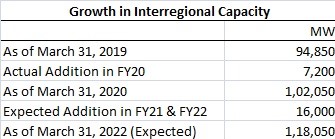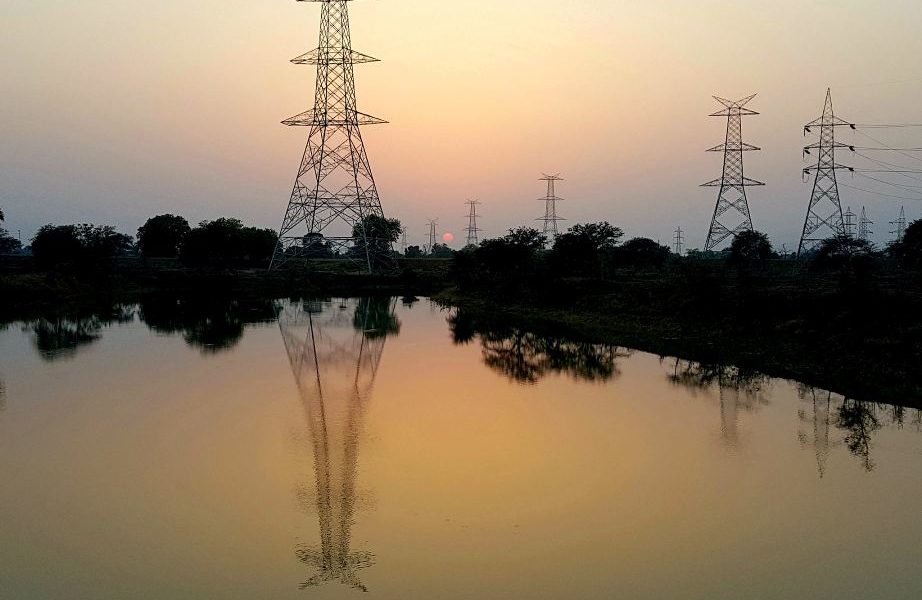The interregional power transmission capacity of the National Grid is expected to cross 118 GW by March 2022, according to a report by CEA.
A recent report by Central Electricity Authority (CEA) has estimated that the interregional transfer capacity of India’s National Grid is estimated to reach 118,050 MW (or around 118 GW) by end of financial year 2021-22, which is March 31, 2022.
As of March 31, 2019, this capacity was 94,850 MW. During FY20, the addition to interregional (IR) capacity stood at 7,200 MW, taking the total IR capacity to 102,050 MW, by March 31, 2020.
This addition of 7,200 MW of IR capacity in FY20 was achieved by the commissioning of the following three interregional lines:
- April 2019: Jharsuguda-Raipur Pooling Station 765kV D/C line (4,200 MW)
- October 2019: Champa-Kurukshetra HVDC Pole-3 (1,500 MW)
- March 2020: Champa-Kurukshetra HVDC Pole-3 (1,500 MW)
Between April 1, 2020 and March 31, 2022, which covers the two financial years, FY21 and FY22, it is expected that 16,000 MW of new IR capacity will be added. This addition is expected to come from the following four interregional lines:
- Vindhyachal-Varanasi 765kV D/C (4,200 MW)
- Warora Pool-Warangal (New) 765kV D/C (4,200 MW)
- Raigarh-Pugulur 800kV HVDC Bipole (6,000 MW)
- LILO of Narendra-Narendra (New) 400kV line at Xeldam in Goa (1,600 MW)
With 16,000 MW added from these four lines, the total IR capacity would stand enhanced to 118,050 MW.
It may be mentioned that one element of the Raigarh-Pugulur 800kV HVDC Bipole link was recently commissioned. (Read more..)

Impact on ATC
When the four elements discussed above are commissioned, there would be a positive impact on the Available Transfer Capacity (ATC) between the regional grids. It may be noted that interregional grid capacity is different from available transfer capacity. (Read related story.)
The ATC between the NEW (north, east and west) corridor will stand enhanced to 20,700 MW by March 31, 2022, from the current 11,500 MW. Similarly, ATC between the Northern Region Grid and the Southern Region Grid will be stepped up to 22,000 MW from the present 19,500 MW.
National Grid
India’s National Grid is divided into five regions—North, South, East, West and Northeast. These regions are popularly denoted as NR, SR, ER, WR and NER. Today, synchronous transmission (at same frequency of 50Hz) is possible between every region. Elements of the National Grid are developed by Power Grid Corporation of India Ltd (on nomination basis) or through the tariff-based competitive bidding (TBCB) modality where private developers along with PGCIL bid for the project quoting transmission tariffs. The developer, selected on the basis of tariff quoted, is awarded the project under the build-own-operate-maintain (BOOM) mode, for a concession period that is usually 25-30 years.
(Featured photograph sourced from IndiGrid is for representation only)



